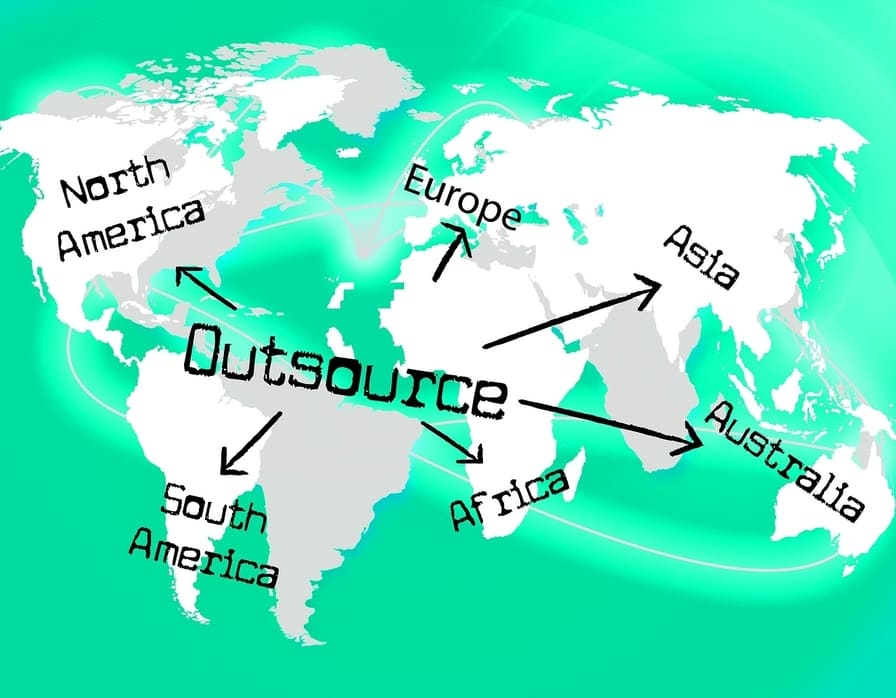As an e-commerce business owner, you know that success is always an uphill climb. On another hand, if you don't have a store yet, I invite you to check out how to create a profitable eCommerce store from scratch. There’s rarely a point when you can take your foot off the gas -- but as you get more successful, your problems transform. In the beginning, you worried that every setback would be the one that put you out of business, but as you grow, you’ll start to get worried that you aren’t doing enough to capitalize on your growth. In other words, they’re good problems every successful e-commerce business has.
1. Struggling with Fulfillment
Having too many orders is the kind of problem young e-commerce entrepreneurs like to have but mature entrepreneurs know that it''s not as good as it seems. An order comes in, you pack it, you ship it. Ten orders come in, you pack them, you ship them, you treat yourself to a glass of wine with dinner. A hundred orders come in -- what do you do? What about a thousand?
Fulfillment is one of the trickiest things to balance as an e-commerce owner because it’s one of the most important things to get right. Nothing makes a customer more upset than a delayed or incorrect order. However, at some point, you get so big you have to let go of some control - but hey, growing pains mean you’re growing, right?
There are a couple of points when you’re likely to face this issue. The first is when you transition from in-house to outsourcing your fulfillment. When your business becomes successful enough, it will no longer make sense to do it in-house, and instead, you’ll want to make the move to a third-party fulfillment company that can take care of fulfilling orders and shipping them for you. The second is when you outgrow your current fulfillment center and you need to look for one that can handle the increased demand, international shipping, kitting, or any other needs that aren’t being met. For both of these scenarios, you’ll want to use a checklist of questions to make sure that your prospective fulfillment center can handle your needs when you start hunting one down.
Fulfillment is one of the trickiest things to balance as an e-commerce owner because it’s one of the most important things to get right. Nothing makes a customer more upset than a delayed or incorrect order. However, at some point, you get so big you have to let go of some control - but hey, growing pains mean you’re growing, right?
There are a couple of points when you’re likely to face this issue. The first is when you transition from in-house to outsourcing your fulfillment. When your business becomes successful enough, it will no longer make sense to do it in-house, and instead, you’ll want to make the move to a third-party fulfillment company that can take care of fulfilling orders and shipping them for you. The second is when you outgrow your current fulfillment center and you need to look for one that can handle the increased demand, international shipping, kitting, or any other needs that aren’t being met. For both of these scenarios, you’ll want to use a checklist of questions to make sure that your prospective fulfillment center can handle your needs when you start hunting one down.

2. Expanding Your Website
Putting together a website is something that a lot of entrepreneurs hunker down and learn to do themselves, usually with a Wordpress template and Woocommerce plugins. However, at some point, it just isn’t going to cut it anymore. When you start getting overloaded with traffic, your starter site will protest by loading much slower. You also will probably not have the customization, mobile optimization, or integrations with third parties that you need. It’s time to switch and create a powerful and successful e-commerce site.
Another scenario is that you’ve only conducted your business on a third-party marketplace like Amazon or Etsy, but you’re feeling limited and wanting to expand. Again, it’s time to start your own website, and you’ll want a powerful and customizable platform like Magento or Shopify to support your growing needs.
Another scenario is that you’ve only conducted your business on a third-party marketplace like Amazon or Etsy, but you’re feeling limited and wanting to expand. Again, it’s time to start your own website, and you’ll want a powerful and customizable platform like Magento or Shopify to support your growing needs.
3. Influencer Marketing
Influencers. We love to hate them but they have what we all want: an engaged audience that trusts them. Business owners have figured out pretty quickly that they can capitalize on that trust and work with influencers to get their products out to their audience - but as you become more successful, working with influencers is going to get more complicated. Learning how to do influencer marketing the right way will take some time and research.
You’re going to start receiving requests to work together from influencers. It will seem like a nice change at first, instead of always doing the chasing, but it presents a whole new type of issue. The reality is that you’ll likely be contacted by influencers who have poor engagement, a low follower count, or charge too much for a shout-out (or the trifecta of all three). You’ll need to become pretty savvy in recognizing what good, consistent, genuine engagement looks like so that you can vet the influencers that contact you. You’ll also need to determine what price is worth it for you, and what you want for your money.
You’re going to start receiving requests to work together from influencers. It will seem like a nice change at first, instead of always doing the chasing, but it presents a whole new type of issue. The reality is that you’ll likely be contacted by influencers who have poor engagement, a low follower count, or charge too much for a shout-out (or the trifecta of all three). You’ll need to become pretty savvy in recognizing what good, consistent, genuine engagement looks like so that you can vet the influencers that contact you. You’ll also need to determine what price is worth it for you, and what you want for your money.
4. What To Automate
Marketing automation presents one of the most fundamental tradeoffs in the business world: spending money to save time. When you’re still a small business there’s no question that it’s worth it to spend some extra time to save money, but when you get more successful, that will change. The question is, what do you automate, and when?
The first place many successful e-commerce business owners experiment with is email automation - it’s the lowest cost and biggest time saver for growing businesses. Signing up for a service that will send automated welcome emails, cart abandonment emails, and newsletters will save time and increase conversions for very little money - but what about when business keeps growing?
If you’re struggling to keep up with your inventory - reordering at the right time, keeping an accurate count of the inventory you have on-hand - it’s time to start automating your inventory management. Signing up for a system that will keep a live and accurate count of your inventory and reorder when you reach a certain level will take a huge burden off your plate and allow you to focus on other areas.
Other areas of automation you should consider are fulfillment, returns, and customer service. Fulfillment, as discussed above, should be outsourced and automated when you outgrow your in-house fulfillment or your current fulfillment partner. Returns can be automated within your website by enabling an automated returns request system for your customers to use that generates a shipping label for them. And finally, when you’re getting a little overwhelmed with providing quality customer service, you should look into a service that can utilize a team of agents that can take care of the bulk of the questions for you.
The first place many successful e-commerce business owners experiment with is email automation - it’s the lowest cost and biggest time saver for growing businesses. Signing up for a service that will send automated welcome emails, cart abandonment emails, and newsletters will save time and increase conversions for very little money - but what about when business keeps growing?
If you’re struggling to keep up with your inventory - reordering at the right time, keeping an accurate count of the inventory you have on-hand - it’s time to start automating your inventory management. Signing up for a system that will keep a live and accurate count of your inventory and reorder when you reach a certain level will take a huge burden off your plate and allow you to focus on other areas.
Other areas of automation you should consider are fulfillment, returns, and customer service. Fulfillment, as discussed above, should be outsourced and automated when you outgrow your in-house fulfillment or your current fulfillment partner. Returns can be automated within your website by enabling an automated returns request system for your customers to use that generates a shipping label for them. And finally, when you’re getting a little overwhelmed with providing quality customer service, you should look into a service that can utilize a team of agents that can take care of the bulk of the questions for you.
5. What to Outsource
We’ve touched on outsourcing a bit in the fulfillment and automation sections, but in truth, there is a huge amount of labor you can outsource as you become more successful - however, it all comes at a price, and only you can determine if that price is worth it. It’s a problem you will continually face as long as you grow: where is your time best spent, and what can you outsource that isn’t a good investment of your time?
In addition to fulfillment and inventory management, you should be looking at areas of your business that don’t need to be done by you. Hiring a freelancer for recurring tasks like social media management, data entry, and copywriting for your website can save you (or your core team) a lot of time, and you can devote that time to bigger tasks.
In addition to fulfillment and inventory management, you should be looking at areas of your business that don’t need to be done by you. Hiring a freelancer for recurring tasks like social media management, data entry, and copywriting for your website can save you (or your core team) a lot of time, and you can devote that time to bigger tasks.

6. Cohesive Omnichannel Experience
Omnichannel marketing is now more important than ever in retail or in e-commerce. Congratulations, you’re selling your products across multiple channels - but now you’re struggling to keep everything cohesive and you’re losing customers when they switch from one channel to another.
If you’re struggling with this, it’s likely because you haven’t created an omnichannel experience for your customers. For example, if you’re selling on your own website, Amazon, and Instagram, and each channel has its own style and offerings, your potential customers are going to struggle when they switch from one channel to another. Providing a cohesive experience is all about seamlessly connecting each channel and treating the customer experience as a larger journey, rather than their individual interactions with each channel.
If you’re struggling with this, it’s likely because you haven’t created an omnichannel experience for your customers. For example, if you’re selling on your own website, Amazon, and Instagram, and each channel has its own style and offerings, your potential customers are going to struggle when they switch from one channel to another. Providing a cohesive experience is all about seamlessly connecting each channel and treating the customer experience as a larger journey, rather than their individual interactions with each channel.
7. Aggressive Competition
The upside is that now you’re a threat - the downside is that you’re going to have to start watching out for a variety of new ways your competition will be trying to steal away your customers. For example, it is against Google’s Terms of Service to use another company’s name in your ad, but that doesn’t mean that companies don’t try it anyway. If you were searching for an article with the best Nike shoes and an ad came up with the subject “Alternatives to Nike shoes,” that would be against the terms of service. And as you get more successful, other companies may try tactics like this on you.
Another big aggressive (and not legal, but still catastrophic) tactic that you can run into are fake reviews and other sabotage, especially on Amazon. Your competition can not only employ fake bad reviews to drag your product ratings down, they can also spam you with 5-star reviews to make it look like you’ve bought reviews, and shut your store down for violating their terms of service. Unfortunately there’s no easy solution for these tactics other than staying on top of them and reporting them when you see them.
Another big aggressive (and not legal, but still catastrophic) tactic that you can run into are fake reviews and other sabotage, especially on Amazon. Your competition can not only employ fake bad reviews to drag your product ratings down, they can also spam you with 5-star reviews to make it look like you’ve bought reviews, and shut your store down for violating their terms of service. Unfortunately there’s no easy solution for these tactics other than staying on top of them and reporting them when you see them.

8. Expanding Your Marketing Strategy
The days of set-it-and-forget-it ads and sharing the same status update across all your social media channels are over. As you get more successful you’ll need to start worrying about upping your marketing strategy game on all platforms you utilize. To make social media an effective marketing tool you’ll need to keep up with trends for the year and start looking at the platforms individually. To focus on your domain authority, you’ll want to start doing outreach within your space to get backlinks to your site, along with keeping your site itself updated with content and following Google’s best practices (Google will be your best marketing partner if you play the game the right way).
As your number of visitors, leads, or subscribers grow, you’ll have the opportunity to experiment with what strategies work best to increase conversions as well. You’ll get more opportunities to A/B test things like newsletters, featuring user-created content, sharing guides, or creating lookbooks, to see what resonates the most with your growing audience.
As your number of visitors, leads, or subscribers grow, you’ll have the opportunity to experiment with what strategies work best to increase conversions as well. You’ll get more opportunities to A/B test things like newsletters, featuring user-created content, sharing guides, or creating lookbooks, to see what resonates the most with your growing audience.
Running a Successful E-commerce Business
While you’ll never stop facing obstacles as an e-commerce business owner, they’ll be a lot easier to overcome if you’re prepared. By knowing what problems you’re likely to have as you grow, you’ll not only know what to look for, but you can create a plan to meet the challenge head-on when it comes.Growth Hackers is a full-service eCommerce branding agency helping e-commerce businesses and store owners grow and have better branding strategies through proven and tested digital marketing and growth hacking solutions. If you want to scale your e-commerce business to its full potential, contact Growth Hackers asap!





1 Comment
Yes. These are indeed good problems but it must still be solved if you want to properly serve your customers.